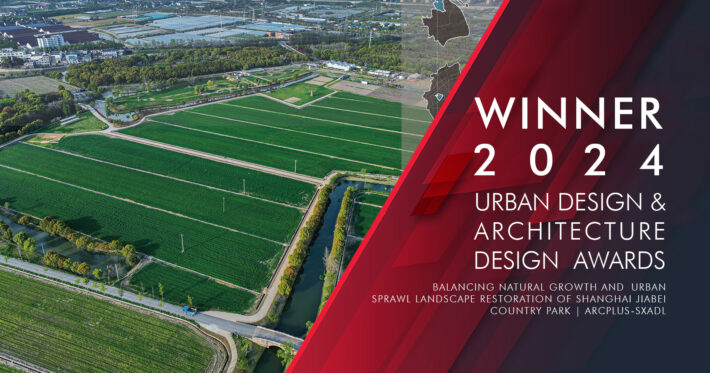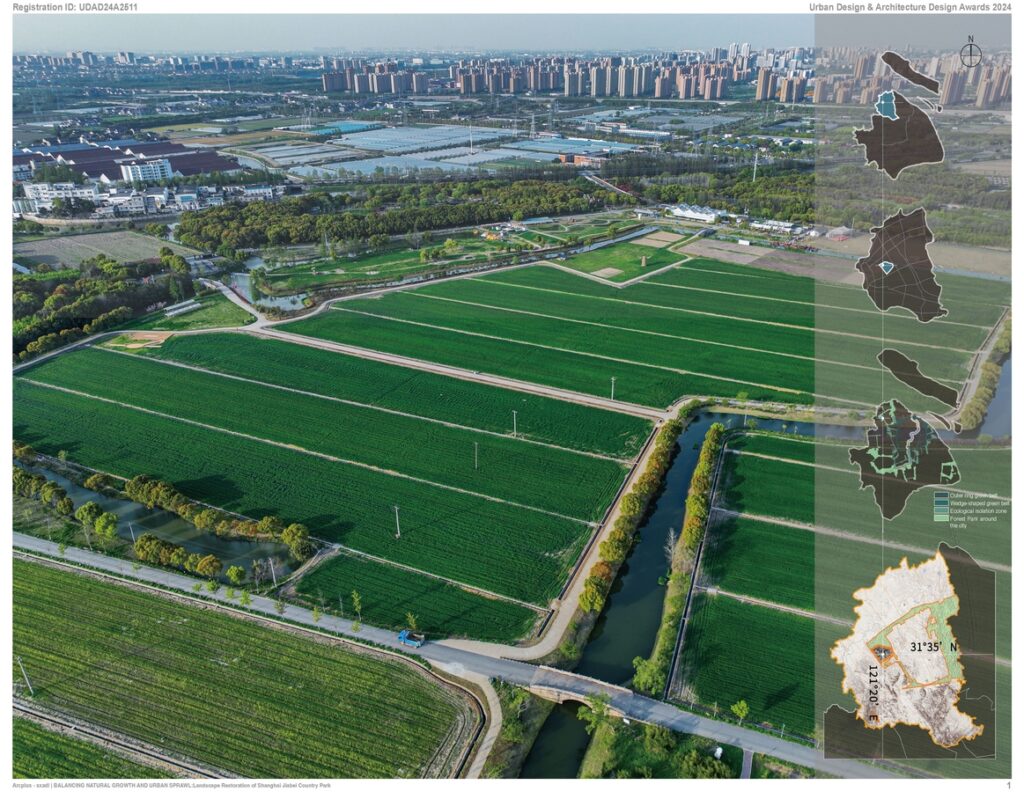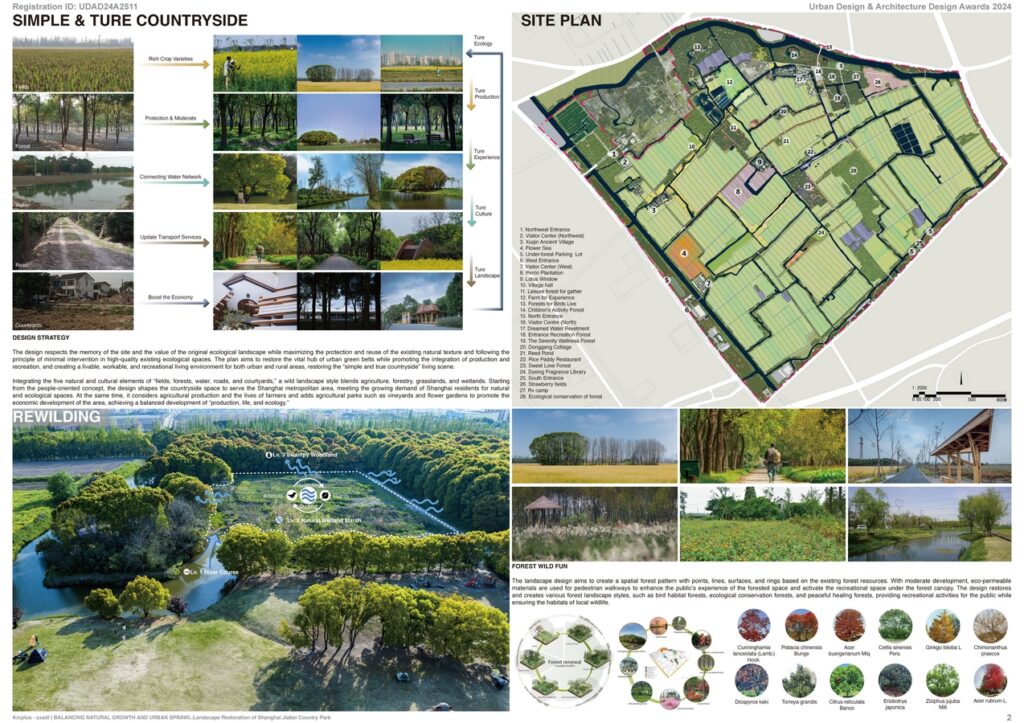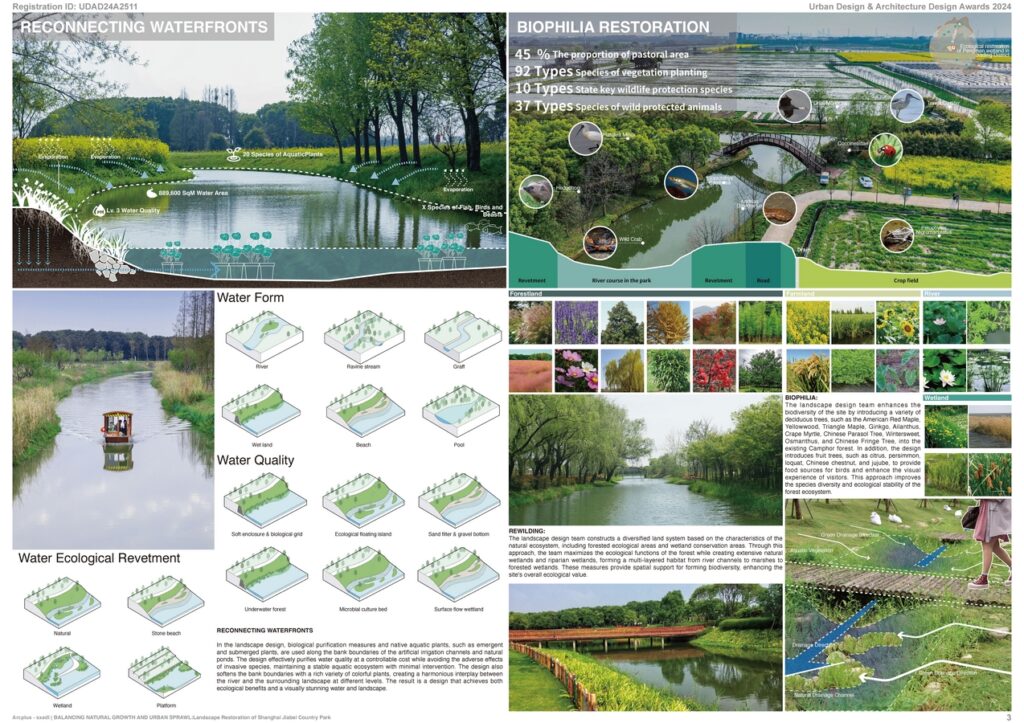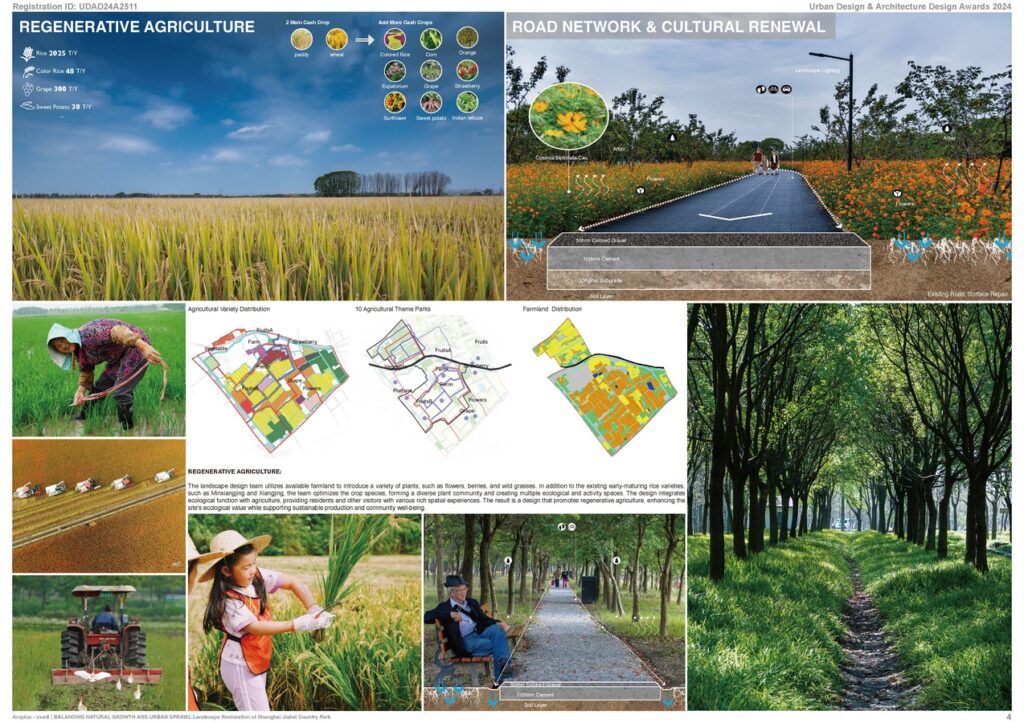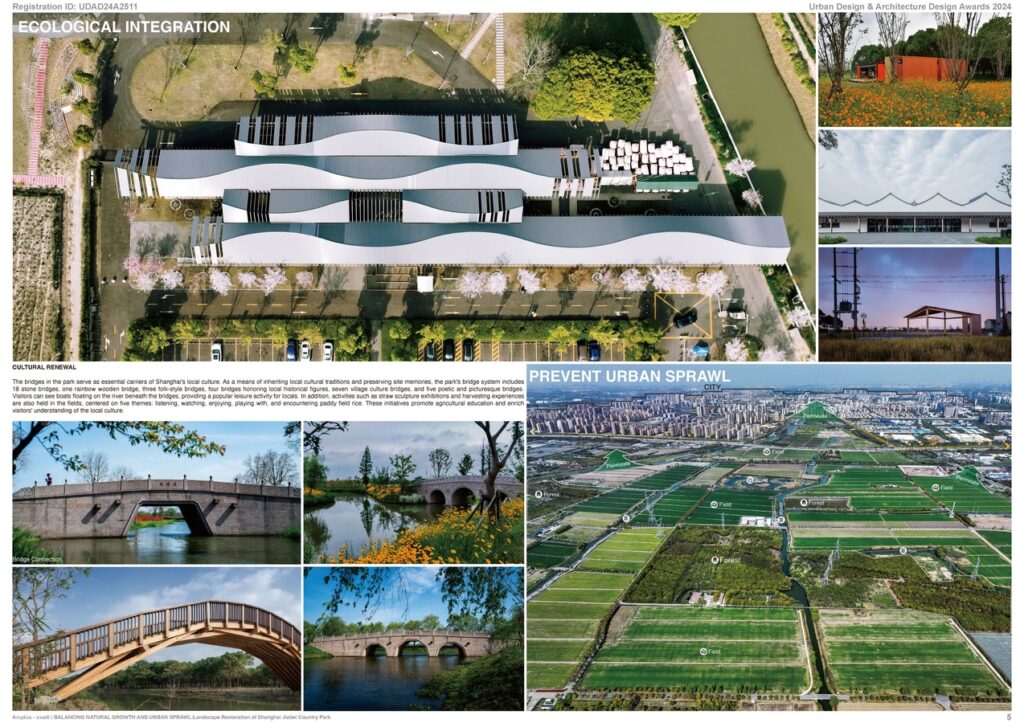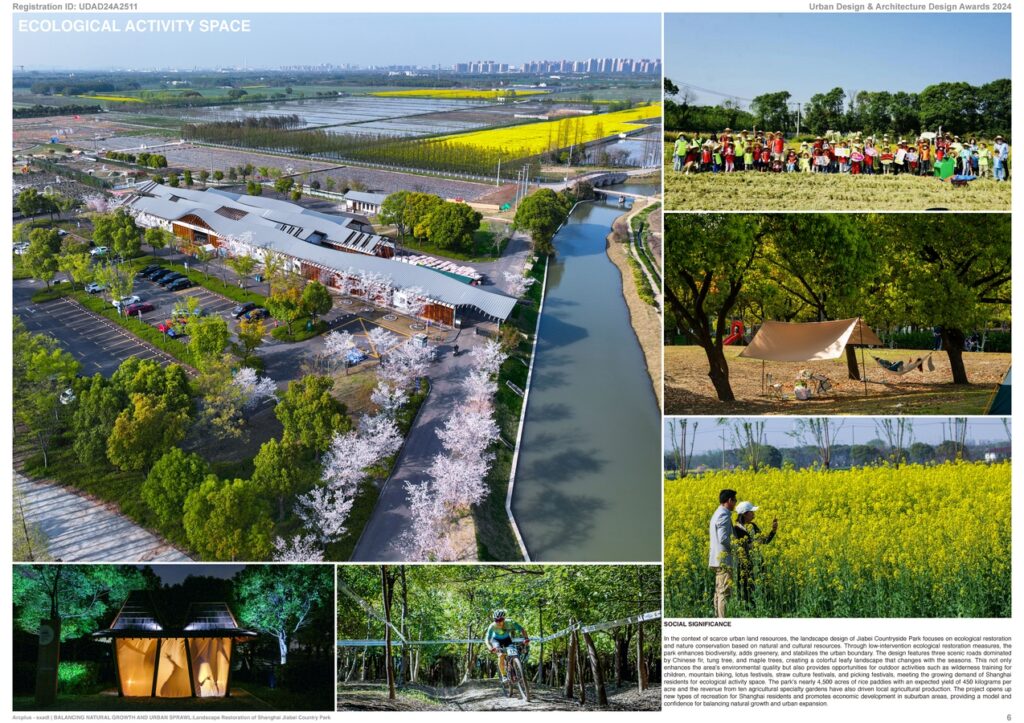The plan aims to restore the vital hub of urban green belts while promoting the integration of production and recreation, and creating a livable, workable, and recreational living environment for both urban and rural areas, restoring the “simple and true countryside” living scene, opening up new types of recreation for Shanghai residents and promotes economic development in suburban areas, providing a model and confidence for balancing natural growth and urban expansion.
Urban Design & Architecture Design Awards 2025: Entries Open!
Take your work to the next level. Register Now…
Gold 🏆 Winner
Urban Design & Architecture Design Awards 2024
Balancing natural growth and urban sprawl: Landscape Restoration of Shanghai Jiabei Country Park
Infrastructure (Built)
Firm
Arcplus-sxadl
Architect/Designer
Zhengqi ZHANG, Jing YUAN, Jiaqi WANG
Design Team
Zhengqi ZHANG, Jing YUAN, Jiaqi WANG, Ming YANG, Hui LAN, Lin JIA, Xiao XU, Qiuhan ZHAO, Xun KONG, Wei ‘an CHEN
Location
Jiading District, Shanghai
Country
China
Photographer/Copyright
©Arcplus-sxadl
Although the site’s farmland is flat and fertile, with good agricultural production, the single variety of crops has led to insufficient economic development in the industry. The site has a typical rural “stacked forest” landscape mainly consisting of camphor forests. However, the high planting density and single forest structure have resulted in a closed environment with limited activity space. In addition, there are many breaks in the overall revetment. And the geological instability has caused drainage problems and the death of trees due to waterlogging during the rainy season, posing safety hazards and environmental crises.
Integrating the five natural and cultural elements of “fields, forests, water, roads, and courtyards,” a wild landscape style blends agriculture, forestry, grasslands, and wetlands. At the same time, it considers agricultural production and the lives of farmers and adds agricultural parks such as vineyards and flower gardens to promote the economic development of the area, achieving a balanced development of “production, life, and ecology.” To enhance the biodiversity of the site by introducing a variety of deciduous trees, such as the American Red Maple, Yellowwood, and Chinese Fringe Tree, into the existing Camphor forest. In addition, the design introduces fruit trees, such as citrus, persimmon, and jujube, to provide food sources for birds and enhance the visual experience of visitors. This approach improves the species diversity and ecological stability of the forest ecosystem.
The design utilizes available farmland to introduce a variety of plants, such as flowers, berries, and wild grasses. In addition to the existing early-maturing rice varieties, such as Minxiangjing and Xiangjing, the team optimizes the crop species, forming a diverse plant community and creating multiple ecological and activity spaces. The bridges as a means of inheriting local cultural traditions and preserving site memories, the park’s bridge system includes 18 stone bridges. In addition, activities such as straw sculpture exhibitions and harvesting experiences are also held in the fields, centred on five themes: listening, watching, enjoying, playing with, and encountering paddy field rice. These initiatives promote agricultural education and enrich visitors’ understanding of the local culture.
Through low-intervention ecological restoration measures, the park enhances biodiversity, adds greenery, and stabilizes the urban boundary. This not only enhances the area’s environmental quality but also provides opportunities for outdoor activities such as wilderness training for children, mountain biking, and lotus festivals, meeting the growing demand of Shanghai residents for ecological activity space. The park’s nearly 4,500 acres of rice paddies with an expected yield of 450 kilograms per acre and the revenue from ten agricultural speciality gardens have also driven local agricultural production.


